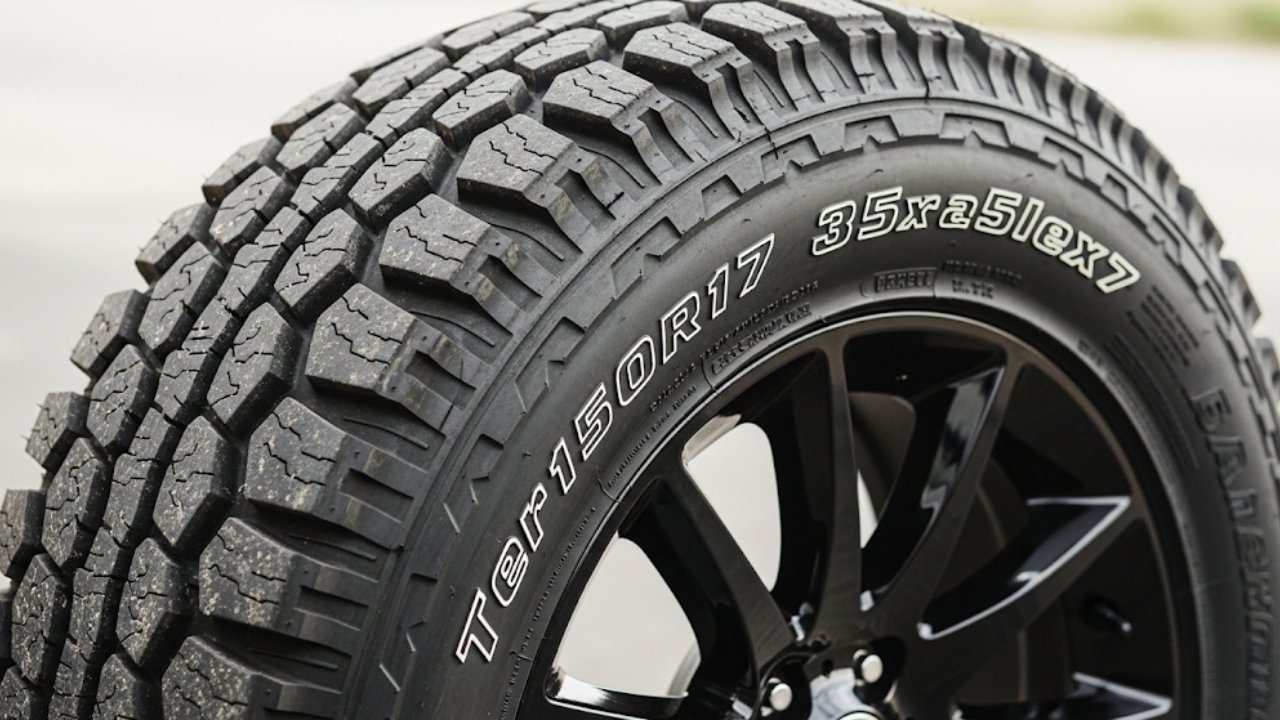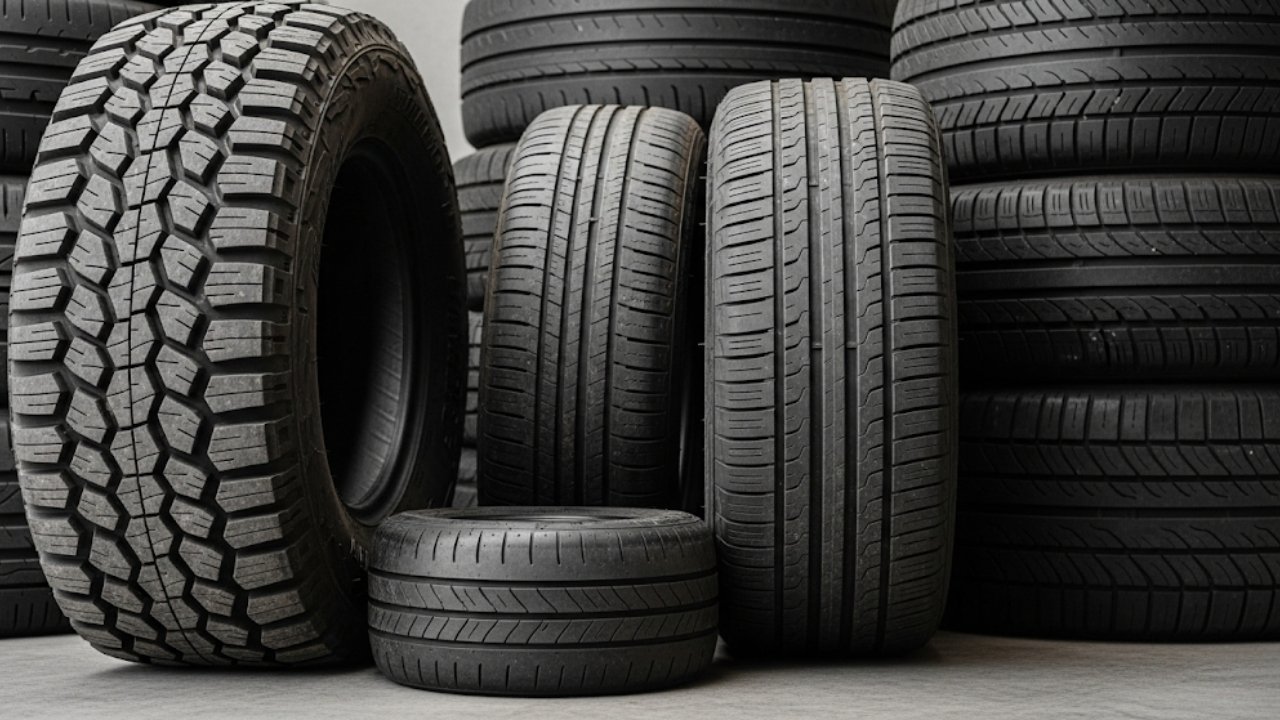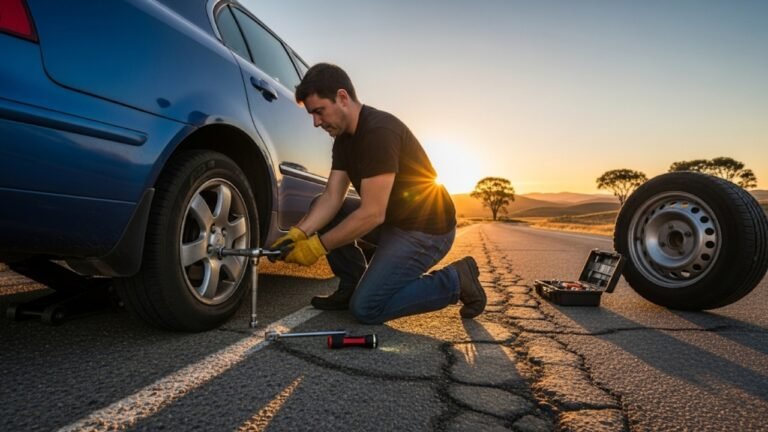What Is Equivalent to a 35 Inch Tire?

Ever stared at a beefy 35-inch tire and thought, “Wow, that looks awesome—but what’s the actual number size of that?” If you’ve ever asked yourself “what is equivalent to a 35 inch tire,” you’re not alone. I was in the same boat a few years back when I was looking to upgrade my Jeep for off-roading trips with my buddies. The world of tire sizes can be confusing at first—it’s like learning a new language. But once you break it down, it all makes sense.
Whether you’re trying to figure out tire swaps, match your wheels to your truck, or just curious what that big rubber ring means in numbers, this guide is here to help. We’ll walk through everything in plain English. No fluff, no jargon.
In This Article
- 1 Why Tire Size Matters More Than You Think
- 2 Breaking Down the 35-Inch Tire Mystery
- 3 Common Tire Sizes That Match a 35-Inch Tire
- 4 Why Metric Equivalents Aren’t Exact
- 5 Will a 35 Inch Tire Fit Your Vehicle?
- 6 How 35-Inch Tires Affect Fuel Economy and Performance
- 7 Pros and Cons of Upgrading to 35-Inch Tires
- 8 FAQs About What Is Equivalent to a 35 Inch Tire
- 9 Choosing Between 35s and Similar Sizes: What’s Best for You?
- 10 Tips for Buying and Installing 35 Inch Tires
- 11 Real-World Story: My 35 Inch Tire Upgrade Journey
- 12 Conclusion: Know Before You Roll
Why Tire Size Matters More Than You Think

When I switched from stock tires to 35s on my Wrangler, I immediately noticed the difference. The ground clearance was better. The ride felt tougher. But it also affected my fuel economy and turning radius. That’s why it’s important to know what’s equivalent to a 35 inch tire in metric sizes. It lets you compare options clearly and avoid costly mistakes.
Bigger tires can also:
-
Enhance off-road traction
-
Raise your ride height
-
Improve aesthetics (let’s be honest—they just look cool)
-
Affect speedometer readings
-
Strain your drivetrain if you’re not careful
So yeah, size does matter—especially when you’re upgrading or modifying your vehicle.
Breaking Down the 35-Inch Tire Mystery
Here’s where things get a bit technical, but don’t worry. I’ll make it super simple.
A 35-inch tire refers to the diameter of the tire from top to bottom when inflated. This is usually found on flotation tire sizes like 35×12.50R17. But most passenger and light truck tires are measured using the metric system, like 315/70R17.
So, what is equivalent to a 35 inch tire in metric terms?
Here’s a handy way to convert it:
Tire Height = (Sidewall Height × 2) + Rim Diameter
Sidewall Height = (Tire Width × Aspect Ratio) ÷ 100
Using 315/70R17 as an example:
-
Tire Width = 315 mm
-
Aspect Ratio = 70
-
Rim = 17 inches
Sidewall height: (315 × 0.70) = 220.5 mm = 8.68 inches
Tire Height = (8.68 × 2) + 17 = 34.36 inches
Pretty close, right?
Common Tire Sizes That Match a 35-Inch Tire
So, here’s the part you came for—what is equivalent to a 35 inch tire in other formats?
Here’s a comparison table of common equivalents:
| Tire Size | Approximate Diameter | Width (inches) | Notes |
|---|---|---|---|
| 315/70R17 | 34.4″ | 12.4″ | Closest match to 35″ on a 17″ rim |
| 325/65R18 | 34.6″ | 12.8″ | Fits 18″ rims, very close in height |
| 295/70R18 | 34.3″ | 11.6″ | Slightly narrower, still good match |
| 285/75R17 | 33.8″ | 11.2″ | Slightly smaller, but close |
| 315/75R16 | 34.6″ | 12.4″ | Great for 16″ rims |
Pro Tip: Tire brands vary slightly in size, even with the same numbers. Always check the manufacturer’s actual specs!
Why Metric Equivalents Aren’t Exact
This is important. Even if two tires say they’re the same size, the real-world measurements can differ. It’s kind of like buying a “large” T-shirt from two different brands—one might fit perfectly, while the other feels like a tent.
Tire measurements can vary depending on:
-
Tread depth
-
Sidewall stiffness
-
Intended use (all-terrain vs mud-terrain)
-
Brand-to-brand manufacturing specs
That’s why knowing what is equivalent to a 35 inch tire is about more than just numbers. It’s about understanding fit, function, and how it behaves on your specific vehicle.
I remember when I tried 315/70R17 tires on my Tacoma. They rubbed just slightly unless I added a small lift. But the exact same tire on my buddy’s F-150 fit perfectly without any mods. Vehicles have different suspension designs, fender clearance, and geometry.
Will a 35 Inch Tire Fit Your Vehicle?
Here’s where many people run into issues. You’ve figured out what is equivalent to a 35 inch tire, but will it actually fit?
Let’s break it down:
1. Stock Trucks/SUVs:
Most factory trucks and SUVs can’t handle 35s without some modifications. You’ll probably need:
-
A lift kit (2.5″ to 6″)
-
Trimming of fenders or inner liners
-
Re-gearing the axles to avoid sluggish acceleration
2. Jeep Wranglers and Broncos:
These are a bit more forgiving. Many off-road packages come pre-lifted. On Wranglers, 35s fit well with a 2.5-inch lift. Anything less may cause rubbing during full turns or when flexing on trails.
3. Half-Ton Trucks (like F-150, Silverado):
You’ll need at least a 3 to 6-inch lift to run 35-inch tires comfortably. Be prepared for steering adjustments and possible speedometer recalibration.
Remember: Bigger tires change your gearing and handling. So even if you get them to fit, they might not perform well unless you adjust other components too.
How 35-Inch Tires Affect Fuel Economy and Performance
Alright, time for a bit of tough love. Yes, 35s look amazing and tackle trails like a beast. But there’s a trade-off. When I switched to 35s, my gas mileage dropped by almost 3–4 MPG. That’s not a deal-breaker for everyone, but it adds up if you’re commuting daily.
Here’s what else to expect:
-
Slower acceleration
-
Less responsive steering
-
Increased wear on brakes and suspension
-
Possible gear ratio mismatches
But if you’re doing it for off-roading, overlanding, or just for the rugged looks—it’s worth it. Just go in with your eyes open.
Pros and Cons of Upgrading to 35-Inch Tires
Let’s weigh the good and the bad in quick bullets.
✅ Pros:
-
Higher ground clearance
-
Aggressive look
-
Better traction off-road
-
More durable sidewalls
❌ Cons:
-
Reduced MPG
-
Harder on suspension
-
May need lift kit
-
Speedometer may be off
If you’re only hitting city streets, maybe stick with stock or slightly bigger. But if trails, sand, or snow are calling your name, 35s can be your best friend.
FAQs About What Is Equivalent to a 35 Inch Tire
Let’s clear up some of the most common questions people have when figuring out what is equivalent to a 35 inch tire. These come up a lot—whether you’re new to trucks or deep into the off-road scene.
1. Is 315/70R17 the same as a 35 inch tire?
Yes and no. 315/70R17 is very close to a 35 inch tire—it measures about 34.4 inches in actual diameter. Most people treat it as the go-to metric equivalent for a 35. But remember, tire manufacturers vary slightly, so always check the specs before buying.
2. What does 35×12.50R17 mean?
Great question! This is the flotation format, commonly used for larger off-road tires.
-
35 = tire height in inches
-
12.50 = width in inches
-
R17 = fits a 17-inch rim
It’s a direct way of saying, “this tire is 35 inches tall and 12.5 inches wide.” Super easy once you get used to it.
3. Can I fit 35 inch tires on a stock truck or SUV?
Usually, no—unless your vehicle came from the factory lifted or with a specific off-road package. Most stock setups will rub or cause issues unless you:
-
Install a lift kit
-
Adjust the suspension geometry
-
Possibly trim fenders or wheel wells
Always check with a local tire or 4×4 shop if you’re unsure.
4. How much lift do I need for 35 inch tires?
It depends on your vehicle. Here’s a quick guide:
-
Jeep Wrangler (JK, JL): 2.5″ to 3.5″ lift
-
Toyota Tacoma: 3″ to 4″ lift
-
Ford F-150 / Chevy Silverado: 4″ to 6″ lift
-
Jeep Gladiator: At least 2.5″, sometimes more depending on suspension setup
Don’t just slap on bigger tires—make sure your suspension can handle them.
5. Will 35 inch tires affect my speedometer and MPG?
Absolutely. Bigger tires = slower rotations per mile. That means your speedometer may read slower than your actual speed. Also, because they’re heavier and bulkier, expect a drop in fuel economy. Mine went down around 3 MPG after switching to 35s.
Choosing Between 35s and Similar Sizes: What’s Best for You?
You’ve got options. If you want the look and function of a 35 inch tire, but don’t want to commit to all the changes it requires, there are solid alternatives.
Here’s a quick breakdown of “almost 35” tire sizes and what they offer:
| Tire Size | Best For | Pros | Cons |
|---|---|---|---|
| 315/70R17 | Most common 35″ metric match | Balanced, widely available | Slightly shorter than 35″ |
| 295/70R18 | Less aggressive trucks or mild off-roaders | Good clearance, no rubbing | Slightly narrower |
| 305/65R18 | Looks beefy without being oversized | Great highway/off-road mix | More expensive |
| 285/75R17 | Light trucks and daily drivers | No lift needed (sometimes) | Not a true 35″ equivalent |
So, if you’re not ready to re-gear or lift your vehicle, one of these “almost 35” tires could be a better fit. It’s like choosing between hiking boots and trail shoes—they both get the job done but serve slightly different needs.
Tips for Buying and Installing 35 Inch Tires
Buying tires isn’t like grabbing shoes off a rack—it’s a commitment. And if you’re going with what is equivalent to a 35 inch tire, a little preparation goes a long way.
Consider These Tips:
-
Measure twice, buy once: Use a tire calculator or ask a professional to make sure they’ll fit your wheels and suspension.
-
Upgrade your gears if needed: Stock gearing might struggle with 35s, especially in automatics.
-
Check your warranty: Bigger tires may void parts of your powertrain warranty.
-
Balance tires properly: Bigger tires can cause more vibration if not balanced correctly.
-
Check for clearance: Turn your wheels side to side and look under full flex if you’re going off-road.
Real-World Story: My 35 Inch Tire Upgrade Journey
Let me tell you a quick story.
When I first swapped my stock 31-inch tires for 315/70R17s on my Wrangler, I was pumped. The stance looked incredible. I felt like I had leveled up. But within a week, I realized the changes weren’t just cosmetic. My gas mileage dropped. The steering felt heavier. I had to get the speedometer recalibrated. And I needed to re-gear to 4.88s to get the power back.
But you know what? I don’t regret it for a second.
Every time I’m on a trail, crossing rocky hills or deep snow, I feel confident. And honestly, there’s something empowering about taking charge of your setup and making your rig your own.
So, if you’re wondering what is equivalent to a 35 inch tire, don’t just think in numbers—think about how it will feel to drive it every day.
Conclusion: Know Before You Roll
Let’s bring it home.
Understanding what is equivalent to a 35 inch tire helps you make smarter, safer, and more satisfying upgrades to your truck or SUV. Whether you go with a 315/70R17, a 325/65R18, or something just under 35 inches, now you know the trade-offs, the math, and the real-world impact.
Here’s what to remember:
-
35-inch tires are more than a number—they change the way your vehicle drives.
-
Metric equivalents like 315/70R17 are common, but not always exact.
-
Always check for fitment, performance effects, and gear ratios before upgrading.
-
If you’re not ready for the extra work that comes with 35s, consider “almost” sizes that still deliver a bold look.
In the end, it’s all about matching your needs to your lifestyle. And whether you’re tearing through the desert, cruising the highway, or crawling over boulders, your tires are your foundation.
So roll smart—and enjoy the ride.






